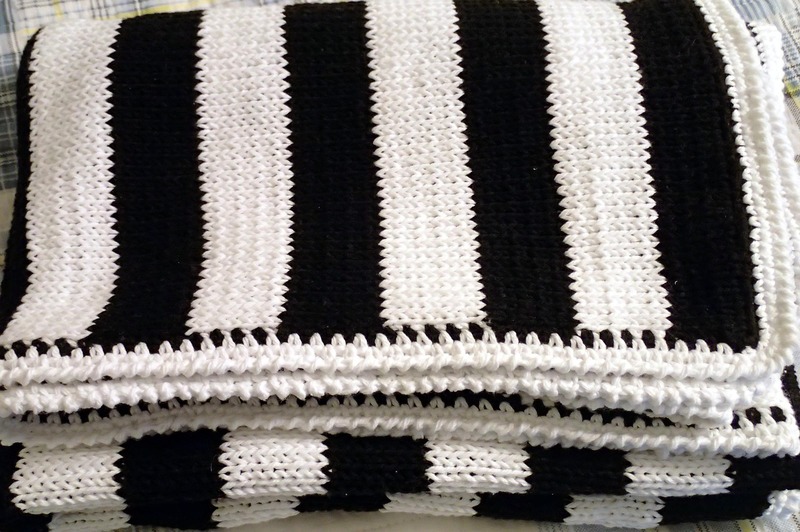There are two effective, not to mention fascinating, ways to know how to tell if a blanket is wool or not.

There are ‘tests’ that you can have your blanket take to make sure that it is indeed authentic wool or just synthetic.
You might wonder if this is a legitimate concern, which it is.
With wool having a huge comeback recently, there has been a steady increase and the production of synthetic wool in the market.
Being a buyer, knowing if it is genuine is something you would want to know.
Other than that, you probably have additional questions regarding wool blankets you might want an answer to.
Ways On How To Tell If A Blanket Is Wool
Wool has been having a stable increase in popularity over the years.
It is a blanket you can turn to for warmth during winter nights and chilly days.
With it coming back to the limelight, synthetics and blends are also growing in number.
Some products claim to be 100% authentic but are they?
Not knowing for sure can lead to laundry accidents and even allergic reactions. Fortunately, there are 2 ways to see the answer!
Method #1. The burn test
- Step #1. Prepare all materials: matches/candle, glass bowl, metal wire, tongs/metal tweezers, and water.
As this involves fire, make sure to practice safety precautions like having a fire extinguisher available.
- Step #2. Carefully remove several fibers from the blanket, advisably from a place where it won’t be easily noticed.
Wind these fibers together tightly, around an end of a metal wire that won’t burn.
- Step #3. Fill the glass bowl with water.
- Step #4. Light up the match/candle.
- Step #5. While holding it over the bowl, touch it with the lit-up match/candle.
Authentic wool would catch fire upon contact and will remain to have a steady burn. Also, take note of the smell.
Authentic wool smells like burning hair. The residue must be charcoal-like friable and has ash residue that quickly pulverizes.
Method #2. The bleach test
- Step #1. Prepare all the needed materials you will need, such as bleach and bowl.
- Step #2. Cut off several fibers without causing any noticeable damage to the blanket.
- Step #3. Place the pieces of fibers in a small bowl. Cover it with bleach. Another option is using a jar with a lid.
- Step #4. Please keep it in a ventilated room. Wait for about 8 hours.
- Step #5. After 8 hours, check the fibers. Authentic wool will dissolve in bleach. It will disintegrate completely.
Are Wool Blankets Itchy?
Hearing the word ‘wool’, most would jump to the conclusion that it is itchy.
This is a usual misconception that causes some to steer clear from wool. Though admittedly, some itchy, scratchy wools exist but not all of them.
It will all fall on the type of sheep and the quality of the wool. Another reason is how the wool is spun and processed.
Wool is considered a resilient fiber. However, the more it is processed, the scratchier it is to the skin it gets.
One of the best and softest types of wool is the Merino. This wool is famous for being luxurious, smooth, and above all, not scratchy.
How To Wash Wool Blankets?
Before you start washing your wool blanket, make sure to shake it out first. After that, hang it in a ventilated area.
This is necessary to help the blanket become fresher.
After hanging it, lay it on a flat surface and brush it. Use a soft-bristled brush to do this, with each stroke going only one direction.
This will help remove dirt and dust.
Suppose you notice any stains, better to take care of them immediately.
Please treat them with mild detergent, cold water, club soda, or vinegar solution (2/3 cup water and 1/3 distilled white vinegar).
Soak the area with the stain and blot it with a clean cloth.
Fill the washing machine with wool-safe detergent and cold water. Put the blanket in and let soak for about 15 minutes.
Please note that hot or warm water is a no-no in the whole washing process as it can shrink the wool blanket.
Set the machine to a gentle cycle and run for about 2 minutes. Switch to the rinse cycle and let it complete.
If you see any suds, send the blanket through another rinse cycle.
Using a dry bath towel, roll up the blanket. This technique will help absorb the moisture.
Keep in mind that wringing out the blanket will most probably misshape it.
Lastly, air-dry the wool blanket. Hang it outside to let dry but keep it out of direct sunlight.
It can destroy the softness of the blanket.
How To Store A Wool Blanket?
It would be best if you stored wool blankets properly so they could last longer.
Storing them with mothballs to keep insects away from them is not entirely advisable as it leaves a lasting unpleasant smell to the blanket.
You can store it in a heavy plastic bag or a tightly sealed bin. For pests, add in a few woodblocks or cedar chips.
Conclusion
Knowing whether your blanket is authentic or synthetic wool helps prevent you from having any laundry accidents or allergic attacks in the future.
Thankfully, there are two easy ways to determine how to tell if a blanket is wool or not!
